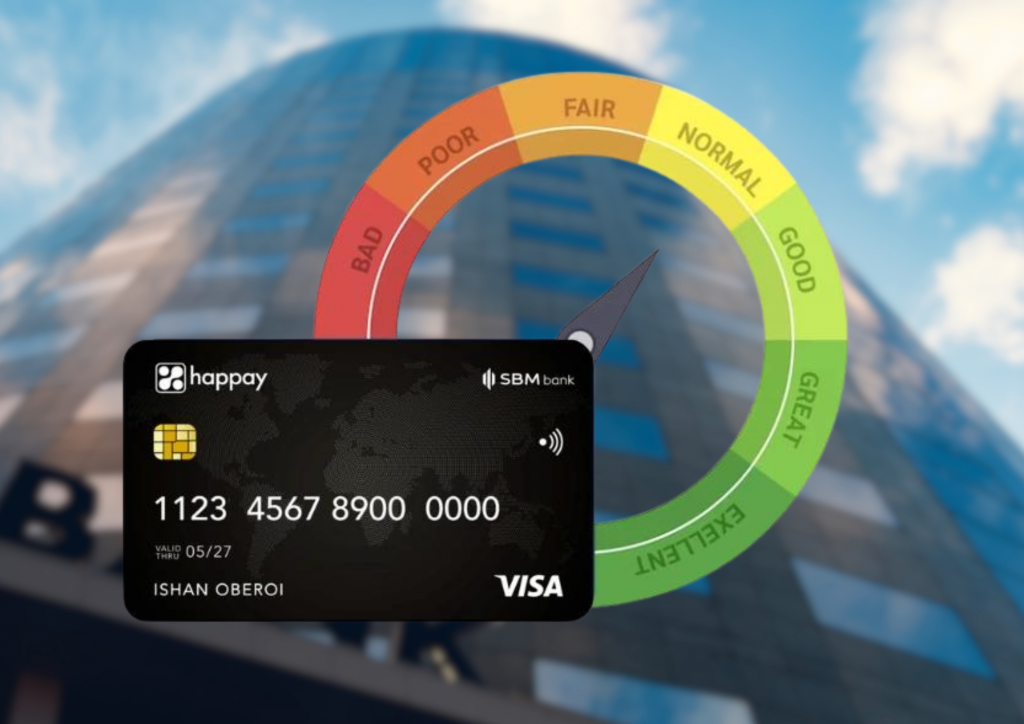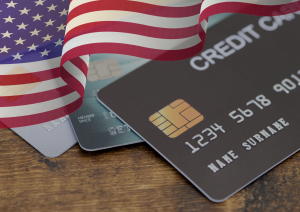According to the Federal Reserve, almost everyone with an income of at least $100,000 has a credit card in their wallet. In 2022, 35 percent of adults applied for a credit card, and compared to the 46 percent of applicants with less than $50,000 in annual income who were denied, only 13 percent of those with an income greater than $100,000 annually were denied.
What We'll Cover
- How Do Credit Card Limits Work?
- What is the average credit card limit?
- What Credit Card Should You Have At Your Income Level?
- How To Increase Your Credit Card Limit
- Pros and Cons to Qualifying for a Higher Credit Limit
- What Are My Chances of Getting Approved for a Higher Credit Limit?
- How Often Can I Get a Credit Limit Increase?
- How Does A Charge Card Differ From A Credit Card?
Continue reading to discover the credit card limit for a 100K salary and different ways to maximize your credit potential:
How Do Credit Card Limits Work?

A credit limit is the maximum amount of money you can spend charging the amounts on a revolving credit card account. As you use your card to make a purchase, the amount is subtracted from your credit limit and added to the balance. The amount left is the available credit you have on the card.
The credit card company typically sets your credit limit based on several factors, including credit scores, payment history, overall debt, and income. The more responsible you are with your finances and the more money you make, the higher your credit limit may be. Once the credit limit is determined, you can spend up to that amount before maxing out your available credit.
Creditors can raise or lower your credit card limits based on your ability to make timely payments, overall credit utilization, and income changes.
What happens if I go over my credit limits?
There is a good chance that a purchase that will put you over your credit limit will be denied at the register. However, some credit cards allow you to go over your limit but may charge a fee. Capital One will enable cardholders to make purchases that put them over their limit and never charge over-the-limit fees.
Depending on your card, you may have the option to disable the ability to spend over your credit limit in your card usage preferences and settings. Check with your credit card company to request additional information about spending limits and what happens if you go over your credit limit.
Do credit limits affect credit scores?

Credit limits have a close relationship with credit utilization ratios. The higher your credit card limit and the lower you maintain your credit card balances, the higher your credit score may be. Keeping your overall credit utilization rate for a credit card under 30 percent of your total available credit is recommended to maintain a decent credit score. Additionally, paying your credit cards off every money is the best way to keep your credit score high.
A higher credit score paired with earning $100,000 annually gives you the freedom and flexibility to get approved for additional credit cards, including some with higher credit limits.
What is the average credit card limit?
Since there are a lot of factors that go into setting a credit limit, the average credit limit can vary, too. According to Experian, the average person has a credit limit of more than $25,000 across all their credit cards. While many credit cards offer a lower starting limit, around $1,000 or less, the average credit card for someone with good credit has a limit between $5,000 and $10,000.
However, those with a higher income may have higher credit limits on a single card and all their credit cards.
How Much Should the Credit Limit Be With a $100k Salary?

Annual income can significantly impact how much your credit limit is for your credit cards. Most credit card companies will base the credit limit on your disposable income and credit history. For example, with good credit and disposable income of $200 per month, your starting credit limit would be $10,000. To calculate this, consider the $200 as your monthly payment, which is two percent of $10,000.
Of course, the more money you make and your total debt-to-income, your credit limit could be significantly higher. Ultimately, the average starting credit limit for those with a $100,000 salary and good to excellent credit is between $10,000 and $15,000, with some credit cards offering a starting limit as high as $25,000.
What Credit Card Should You Have At Your Income Level?
Not all credit cards are created the same, and those with a $100,000 annual salary may benefit more from one credit card than another. The best credit card for people with six-figure incomes is the Blue Cash Preferred from American Express. This card offers cardholders six percent cash back at U.S. supermarkets and on select streaming services, three percent back at U.S. gas stations, and all other purchases qualify for one percent back. Other benefits include a statement credit of $250 for spending $3,000 in the first six months. Ultimately, this card is perfect for those with higher salaries because they can benefit from the many rewards available by utilizing and paying off the balance on the card.
Other credit cards that those with a higher income level should consider applying for may include the following:
- Centurion Card from American Express
- Chase Sapphire Preferred
- The Platinum Card from American Express
- Citi Prestige Card
- Chase Freedom Unlimited
- Chase Sapphire Reserve
- Capital One Venture X Rewards Credit Card
- Mastercard Black Card
Which Bank Gives The Highest Credit Limit?

The credit card with the highest reported credit limit is the Chase Sapphire Preferred Card, with some cardholders claiming they have a $100,000 limit. The First Tech Odyssey Rewards World Elite Mastercard, a credit union rewards card, has advertised its maximum credit limit at $100,000.
Having a credit card with a limit higher than $100,000 is rare. However, the American Express Centurion Card has no preset spending limit. This card is only issued to high-net-worth individuals with excellent credit history.
How To Increase Your Credit Card Limit
A higher credit limit gives you the financial freedom to purchase needed items, especially in an emergency. Sometimes, credit card companies automatically increase your credit limit based on a series of on-time payments, keeping your credit utilization low.
While some banks, such as Wells Fargo, tend not to offer high-limit cards (average between $1,000 and $10,000), there are ways to try to increase your credit limit. Some of the things you can do when needing to increase your credit card limit may include the following:
- Request a credit limit increase
- Online
- In the App
- By Calling
- Update your income on your card profile
Pros and Cons to Qualifying for a Higher Credit Limit

There are several things to consider when getting a higher credit limit, including if you can afford to pay off the balance or make monthly payments. Even with earning $100,000 annually, you may find it challenging to meet your credit card obligations if you have maxed out a high-limit card and have costly monthly debt obligations. Below are some pros and cons of getting a higher credit card limit:
- More spending power
- Opportunity to maintain a healthier credit utilization rate
- Cover larger expenses
- Risk of overspending
- Too many credit inquiries can impact your credit score
What Are My Chances of Getting Approved for a Higher Credit Limit?
Creditors examine your overall credit health, including your score, current debt-to-income ratio, annual salary, and credit history with the creditor. If you have shown you can responsibly manage your current credit line, improved your credit, or recently increased your income, you are a good candidate for an increase.
How Often Can I Get a Credit Limit Increase?

The waiting period between credit limit increases may vary depending on who you have your credit card with. Some companies require you to wait at least six months before requesting another increase. Check with your creditors for additional information about how often you can request an increase to your credit limit.
How Does A Charge Card Differ From A Credit Card?
When looking at the various credit options, you may encounter two options that appear to be similar - credit cards and charge cards. Though the two may look identical, there are differences in how each one works. Below we have listed the differences between these two types of cards:
| Charge Card | Credit Card |
| •The balance has to be paid in full each month •Don’t typically have a preset credit limit •Not as common as credit cards •Credit approved based on spending patterns, payment history, and credit-related considerations •No interest rates (if the balance is paid in full) •Charge cards typically have an annual fee •Offer rewards |
•Type of revolving credit •More financial flexibility •Set credit limits •Pay monthly payments based on the balance •Unpaid balance accrues interest •Some, but not all, credit cards have annual fees •Credit building opportunities •More widely accepted •Offer rewards |
A higher annual income offers many more opportunities to get approved for high-limit credit cards. By maintaining a good credit score, low utilization rate, on-time payments, and other credit scoring factors, combined with your $100K income, you can apply for high-limit credit cards, request a credit increase, and have the potential to qualify for some of the best credit cards available. To learn more about the different high-limit credit cards for those with an income of $100K or more, check with your credit card company or one that offers higher credit limits to help maximize your credit buying potential.
The responses below are not provided, commissioned, reviewed, approved, or otherwise endorsed by any financial entity or advertiser. It is not the advertiser’s responsibility to ensure all posts and/or questions are answered.





